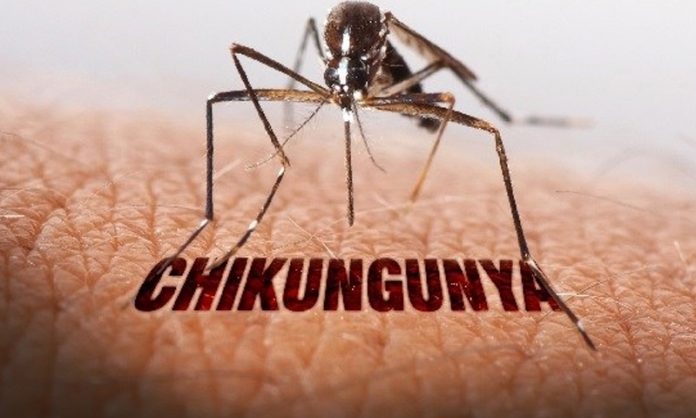Chikungunya is not a lethal disease and it is persisting in those countries where dengue exists because the vector of both diseases is the same mosquito.
The main symptom of Chikungunya is high grade fever along with severe pain in joints. The prevention and control of the disease is essential to save the people from the morbidity.
These views were expressed by the Public Health Experts during a meeting chaired by Punjab Minister for Specialized Healthcare & Medical Education Kh. Salman Rafique to discuss strategy for the prevention and treatment of Chikungunya disease, at Civil Secretariat on Wednesday.
Dr. Sobia Qazi informed that Chikungunya was very identical to the dengue and the symptoms of both the diseases were almost the same however, patients of Chikungunya also feels severe pain in joints which could prolong for many weeks and some cases for many months.

The experts were of the view that if dengue surveillance and vector surveillance would be carried out vigorously, control on both the diseases would be more effective because the same dengue mosquito Aedes albopictus was the cause of spreading Chikungunya.
Kh. Salman Rafique directed that a working group comprising technical experts should immediately be constituted to make recommendations for future strategy in this regard.
He directed that the working group should present its recommendations within a week. The Minister also directed to send a letter to all principals of public sector medical colleges to ask them for an immediate reply regarding the directions issued to them for up-gradation of laboratories few months back.
Diagnosis
Several methods can be used for diagnosis. Serological tests, such as enzyme-linked immunosorbent assays (ELISA), may confirm the presence of IgM and IgG anti-chikungunya antibodies. IgM antibody levels are highest 3 to 5 weeks after the onset of illness and persist for about 2 months.
 Samples collected during the first week after the onset of symptoms should be tested by both serological and virological methods (RT-PCR).
Samples collected during the first week after the onset of symptoms should be tested by both serological and virological methods (RT-PCR).
The virus may be isolated from the blood during the first few days of infection. Various reverse transcriptase–polymerase chain reaction (RT–PCR) methods are available but are of variable sensitivity. Some are suited to clinical diagnosis.
RT–PCR products from clinical samples may also be used for genotyping of the virus, allowing comparisons with virus samples from various geographical sources.
Treatment

There is no specific antiviral drug treatment for chikungunya. Treatment is directed primarily at relieving the symptoms, including the joint pain using anti-pyretics, optimal analgesics and fluids. There is no commercial chikungunya vaccine.
Revention and Control
The proximity of mosquito vector breeding sites to human habitation is a significant risk factor for chikungunya as well as for other diseases that these species transmit.
Prevention and control relies heavily on reducing the number of natural and artificial water-filled container habitats that support breeding of the mosquitoes.
This requires mobilization of affected communities. During outbreaks, insecticides may be sprayed to kill flying mosquitoes, applied to surfaces in and around containers where the mosquitoes land, and used to treat water in containers to kill the immature larvae.

For protection during outbreaks of chikungunya, clothing which minimizes skin exposure to the day-biting vectors is advised. Repellents can be applied to exposed skin or to clothing in strict accordance with product label instructions.
Repellents should contain DEET (N, N-diethyl-3-methylbenzamide), IR3535 (3-[N-acetyl-N-butyl]-aminopropionic acid ethyl ester) or icaridin (1-piperidinecarboxylic acid, 2-(2-hydroxyethyl)-1-methylpropylester). For those who sleep during the daytime, particularly young children, or sick or older people, insecticide-treated mosquito nets afford good protection. Mosquito coils or other insecticide vaporizers may also reduce indoor biting.
Basic precautions should be taken by people travelling to risk areas and these include use of repellents, wearing long sleeves and pants and ensuring rooms are fitted with screens to prevent mosquitoes from entering.





